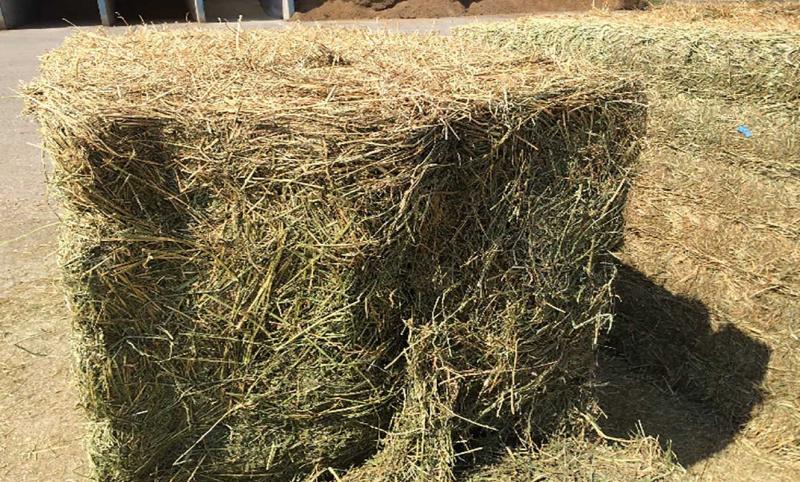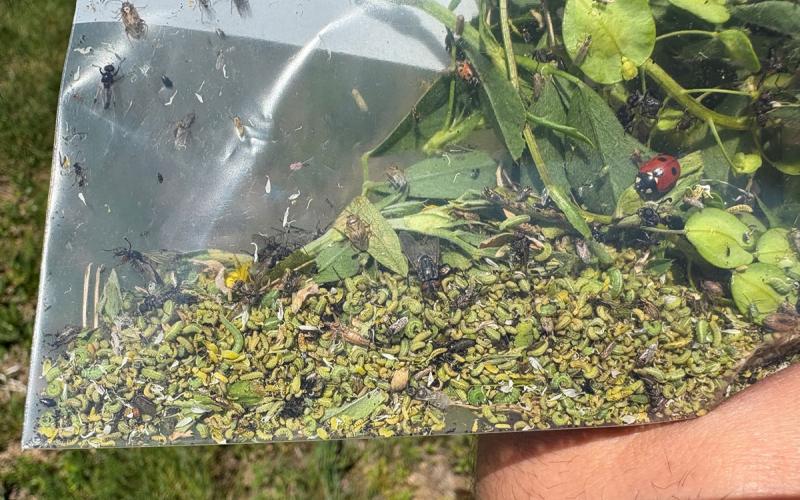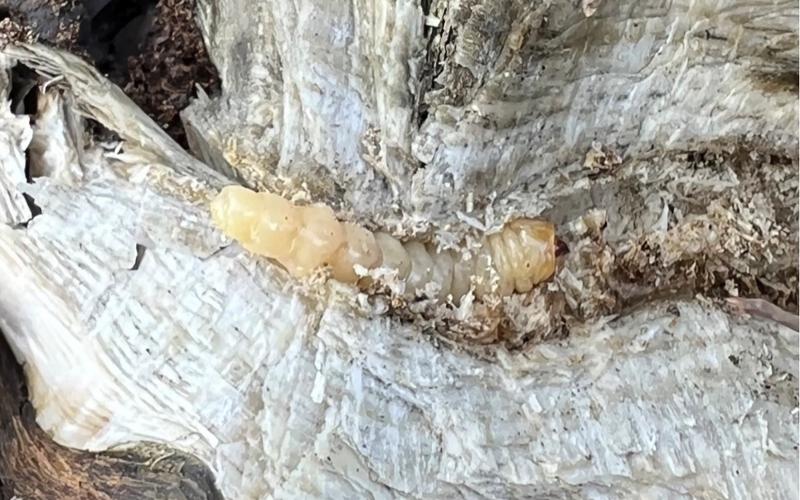
Written collaboratively by Tracey Erickson, former SDSU Extension Dairy Field Specialist and Sara Bauder, SDSU Extension Agronomy Field Specialist.
As haying season approaches, producers across South Dakota will begin preparing to get out the baler. In recent years, it has been quite difficult for many producers to put up quality, dry hay; this often results in growers considering using inoculants and hay preservatives. These additives do have their place within the hay production system, but it’s important to understand the proper time to consider the use of such products.
Keep in mind that ideal storage moisture ranges for hay depends upon bale size. Small square bales- should be stored at 18-20% moisture, and larger bales should be about 3-5% dryer. When moisture is higher than these ranges, a hay preservative or inoculant may be an appropriate consideration; however according to many sources, if moisture reaches more than 30%, additives and preservatives are not recommended.
Often times, inoculants and preservatives are used with silage and haylage, but there are also ways that these products can be used effectively on hay bales, if particular circumstances are met. When used properly, inoculants and preservatives may allow hay to be baled at higher moisture levels than typically acceptable. High moisture baling often tends to cause heat and mold development and these additives are designed to help avoid such losses.
Bacteria Inoculants
Bacterial inoculants are essentially designed to add more ‘good’ bacteria that aid in fast fermentation and to help reduce dry matter losses in hay by improving aerobic stability (ie: stopping mold growth). Most hay already contains such bacteria, as it is naturally sourced from many forage plants and inoculants simply add an additional amount; common lactic acid producing bacteria include: Lactobacillus, Pediococcus, Streptococcus, and Bacillus. These bacteria may help to reduce mold growth and yeast development within bales.
In order to achieve desired results from these products, careful attention to environmental conditions and application should be taken. Inoculants work best on hay that is wetter than average but less than 25% moisture during mid-summer conditions because plant sugars are high during this time. Inoculants should be applied uniformly (typically at the pick-up) as hay is baled, and before any rain lands on the bale. Generally speaking, they tend to help protect against small moisture changes (3-5% higher moisture than you would typically bale). Avoiding these recommendations can result in ineffective outcomes and uneconomical losses.
Overall advantages of using bacterial inoculants include the opportunity to reduce or stop mold growth, improve hay quality and palatability, and to maintain the hay’s green color. Disadvantages may include investment in application equipment, and inconsistent research results when tested for effectiveness and cost analysis in hay bales versus anaerobic, ensiled feed.
Preservatives and Additives
Hay preservatives are generally applied using an aftermarket spray system mounted near the baler pick-up. They are designed to prevent heating and subsequent dry matter losses of hay baled at higher moistures (18%+) by inhibiting growth of aerobic microbes. Essentially, preservatives allow hay to be baled wetter than recommended, reducing the time it lies in the field exposed to precipitation risk.
Organic acids are the most common form of additives with propionic acid being the most prevalent. Effective application of hay preservatives relies heavily upon using the proper rate (dependent on moisture content and size of bale) and quality of forage. Preservatives containing high amounts of propionic acid are generally accepted as effective in reducing spontaneous heating in moist hay; however the use of ammonium propionate (buffered propionic acid) is often recommended over propionic acid because it is less caustic.
Rates of acid required will vary based upon the moisture content of the hay and should be sprayed using the most uniform application as possible. According to sources cited below, smaller bales ranging from 20-25% moisture should be treated with approximately 0.5% propionic acid (in some cases products may be used at 0.5 ± 0.14% of wet bale weight). Increases in application rate may occur by 1% for hay with 25-30% moisture. Many studies to this point have shown no consistent response to preservatives used on hay over 30% moisture.
Research studies have shown that propionic acid, as well as buffered propionic acid is not harmful to animals, but keep in mind that propionic acid is corrosive and can cause damage to machines and people. Buffered acids and salts of acids have been developed to help overcome some of these issues. Both propionic and buffered forms of this acid will likely cause hay discoloration but may help protect feed value. Overall, many research studies show that the use of propionic acid or buffered acids have somewhat erratic results and are often only shown to be economical in large (not ensiled or plastic wrapped) round bales when used to reduce losses incurred from potential precipitation damage.
Summary
Hay inoculants and preservatives do not increase the quality of hay, but rather are designed help to maintain quality and reduce spoilage. Both methods have mixed cost analysis benefits when used on unwrapped (not ensiled) hay bales, and the value of the hay crop being baled should be considered when determining whether to use any additives.
Resources
- Coblentz, W., D. Understander, and M. Bertram. Propionic Acid Preservatives for Hay. University of Wisconsin-Madison. 2013.
- Meyer, D. Should a Hay Preservative Be Used?. North Dakota State University. 2007.
- Schroeder, J.W. Preservatives Make Wet Hay Useable. North Dakota State University. 2009.
- Undersander, D. Hay Desiccants and Preservatives. University of Wisconsin-Madison.


